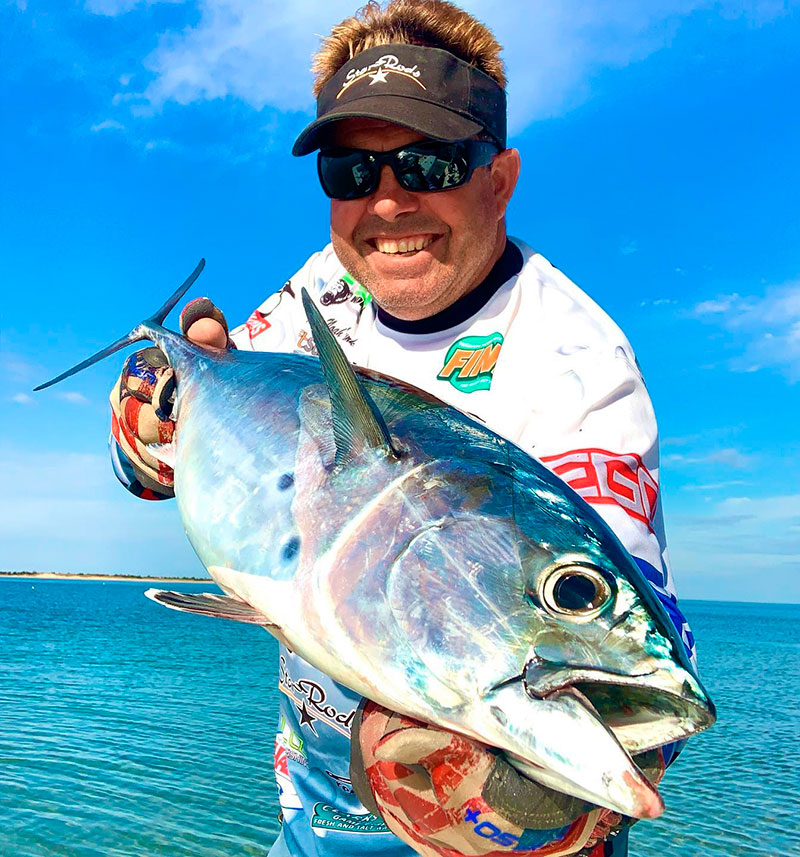
Exciting false albacore fishing at Cape Lookout
Running out of Cape Pointe Marina at Harkers Island, Capt. Noah Lynk of Noah’s Ark Charters (252-342-6911) is catching false albacore this month around Cape Lookout. And these fish are a blast to catch.
“Fishing for false albacore here is a lot of fun, because it’s just action-packed,” said Lynk. “You see a lot of activity on the surface, which is always exciting, and you’re doing a lot of casting, and a lot of reeling, and on most days, a lot of catching.”
This is sight fishing at its best.
“You’ll see these schools of fish working bait, with birds diving down into them. And when you see them, you just need to get within casting distance, give them something to chase, then get ready for a strike,” he said.
Lynk uses fairly light tackle, adding to the fun of fighting these fish, which can go on quick, drag-screaming runs.
“These fish usually show up in early September, and they’ll show up better and better as the fall goes along,” he said. “It’s a great fishery for anglers fishing with spinning gear, as well as fly fishermen. We get people from all over the world coming here to fish what they call the Cape Lookout albacore blitz.”
How long they stay depends on the weather. During exceptionally warm years, they will stick around well into the Christmas season.
Let ‘em run
Lynk prefers a Star Rods Seagis or Plasma rod, rated for line in the 6- to 14-pound class. He pairs that with a 3000 or 4000 spinning reel spooled with 12-pound test FINS Windtamer braided line spliced to a 25-pound Calcutta Fluorocarbon leader with a surgeon’s knot.
“You need that 3000 to 4000 size spinning reel because these false albacore run really hard,” he said.
Lynk uses fairly small lures, to mimic the local anchovies and silver sides. His favorites include Sea Striker Jigfish and the Glass Minnow from Salty Bay Baits.
It’s important for anglers to refrain from locking the drag on their reels down tight. Their explosive runs can break the line, so a loose drag is in order.
“You want to let them run, because they will get tired. Sometimes, they’ll take off as soon as they’re hooked, and run off 40 or 50 yards of line. You just want to reel when they’re not running, but let the reel’s drag do its job when they do go on a run,” he said. “And sometimes, they’ll make hard runs toward you, and you need to reel as fast as it takes to catch up to them.”
These fish can chase bait in one small area for a long time, or they can be there one minute and gone the next. Lynk said it’s important to keep your eyes on the surface to see where they’re busting. If they leave, it doesn’t pay to wait for them to come back. That’s when it’s time to crank the boat and find them again.
The best way to land these fish is to get them beside the boat, then grab and lift then by the tail. And the best way to release them is to forcefully toss them into the water, headfirst. Lynk said make sure to keep at least one to make sashimi back at the dock.




Be the first to comment